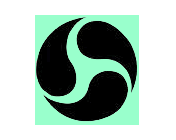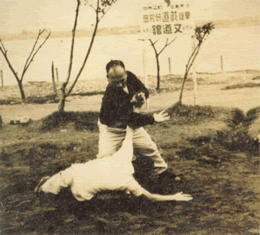

Zong Wu Men - A Brief Outline of the Curriculum
At Zong Wu Men, we study the traditional styles of both Zhang Zhunfeng's Gao style Baguazhang and Li Cunyi's Hebei Xingyiquan.
The study of both Baguazhang and Xingyiquan will be taught in the traditional manner and with an eye towards the needs of the modern student. Preserving, training and researching their essence as fighting systems will be the primary goal of study.
That said, I believe that the practice of Baguazhang and Xingyiquan are able to provide their practitioners more than just the skills for fighting. The traditions associated with their training, their historical culture, the understanding of the body and mind, the ethics and customs associated with their practice, as well as the understanding of principles and philosophies of control, interaction and development that come with their practice all contribute to a more holistic understanding of the place of martial arts in one's life and practice. After some study of Baguazhang the student will understand that there are certain overarching principles, philosophies and ideas that govern their practice and application - these understandings can extend beyond the physical realm of combat interaction.
 There is a certain philosophy within the YiJing, the Chinese Book of Changes, wherein the state of nothingness progresses to contain something, progresses further from there to develop into the 10,000 things and then the process reverses such that you eventually return to nothingness. The study of both Baguazhang and Xingyiquan are similar to and based on this philosophy of training. There is often a saying in Baguazhang circles that all of Bagua is contained in the single palm change. But when first learning the single palm change, a new student will be clueless as to how it may be used in combat at all, let alone how it contains the movements, tactics, strategy and principles of all of Baguazhang.
There is a certain philosophy within the YiJing, the Chinese Book of Changes, wherein the state of nothingness progresses to contain something, progresses further from there to develop into the 10,000 things and then the process reverses such that you eventually return to nothingness. The study of both Baguazhang and Xingyiquan are similar to and based on this philosophy of training. There is often a saying in Baguazhang circles that all of Bagua is contained in the single palm change. But when first learning the single palm change, a new student will be clueless as to how it may be used in combat at all, let alone how it contains the movements, tactics, strategy and principles of all of Baguazhang.
The practitioner first begins as an un-carved block, unadulterated but unknowledgeable. Then one learns basics, such as the single palm change of Baguazhang or the Splitting fist of Xingyiquan. From there one continues to expand their repertoire of technical movements and skills, adding on more forms, more drills and more principles. Eventually the process will reverse, wherein while the early stage of one's progress is typified by a process of differentiation, the later stage will be typified by bringing one's now increased knowledge back in, to combine it again back into a more simple form. Eventually one returns to a state wherein they understand the connection of all they have studied. One returns to the single palm change at this stage with the same external form, but a different understanding on the inside. They are at the same state of nothingness at the beginning, but within is now a new potential. And then the process repeats itself. There is always more to learn.
Currently, the classes predominantly cover the Gao style Baguazhang material, but the study of Xingyiquan is presented often to complement our study of Baguazhang. The five elements of Xingyiquan especially are taught as a foundational practice for all students. Practitioners in our lineage have combined the practice of these two arts for many generations and we continue that tradition.
Baguazhang
Our system of Baguazhang contains a very complete look at the range of movement, principles and application in regards to stand-up fighting. There is a substantial amount of both depth and breadth to the system. Full study of the art will bring the practitioner a well-rounded knowledge of striking with palms, fists, elbows, kicks, knees, shoulders, head and hips, knowledge of joint locks and standing control, and throwing. The practitioner will also eventually choose one or more directions of training with which to develop a deeper knowledge base.
In the beginning, training will emphasize the development of proper body alignment and principles of movement. Some of the beginning exercises taught will be standing meditation for the development of balanced whole-body power and mind/body connection, circle walking - to initiate the student to the unique type of body movement characteristic of Baguazhang (and further develop what you are learning from standing), and jibengong - the basic training and conditioning drills and techniques that are a requirement to successful development of all later martial skills.
Although martial applications and drills will be introduced into class immediately, the main goal for a beginning student is to understand and develop whole-body power and mind/body connection. In relation to your opponent, you will be working on maintaining good structure, achieving and maintaining advantageous angles and positioning, working to break the opponent's structure, working to break the opponent's mind, working with tempo and rhythm, learning how to start and set up the type of situation you want, the use of timing and other principles of use.
Later development will include the study of the core forms of the system, power development and how it fits into the application of Bagua's fighting methods, systematic application and martial skills development, and various levels of two-person drills, push hands and sparring practices with both covering a full range from cooperative to uncooperative. There will also be further study of qigong, neigong, and methods of moving meditation and Yi-development unique to Baguazhang.
Initial Basic Training -
Warm ups and joint mobility exercises.
Basic qigong, zhan zhuang (standing meditation practice) and circle walking practice.
Jiben shoufa (basic hand methods) - 10 basic hand techniques for training the movement of the body in coordination with the arms. Drills basic motions later found throughout the system.
Single palm change - initially taught (at Zong Wu Men) with four variations to provide an introduction to circle walking with its many variations in principle and movement.
Combat stepping
Basic fighting applications - such as zhuang zhang (crashing palm), san pa shou (three climbing hands), chuan zhang (piercing palm) and beng quan (crushing fist)
Intermediate Training -
Tiangan - 10 pairs of a total of 24 exercises that strengthen, stretch, open and reinforce one's structure in movement, mind/body connection and power. They are a type of Gao style Baguazhang-specific neigong training.
Xiantian - the study of the core circle walking forms of the system. Xiantian means Pre-Heaven, this circle walking training is the core method of practice for Bagua practitioners and will train the body method central to good Bagua practice. Each palm also teaches certain principles, applications, throwing and opening techniques. There are also preliminary training exercises that concentrate on the core movement principle of each palm.
Houtian - Houtianzhang means post-heaven palms and refers to the 64 straight line short form practice made famous by Gao style Baguazhang. These primarily train whole-body power, extension of power, opening of the body, and the core application practice of the style. These are for training the range of fighting applications that are somewhat less obvious in the circling forms. They will also train to reinforce and strengthen one's structure and mind/body connection while reinforcing good movement principles.
Duiliu - Paired training exercises such as fanzhang, siping tuishou, sanchuan, sifangda, sanshou, two person forms.
Other - Various other exercises for training power, footwork, weapons, basic attributes, body movement, etc.
Students will initially be introduced to the basic forms and solo practices of the system with an eye towards providing them with an understanding of the movement, structure and rationality of the system. The drilling of fighting applications and footwork central to our system will also be introduced early in the training process. For many, you will also begin training in basic throws, falls and rolls early in the training and how these practices relate to one's understanding of structure, center, center-line, balance, movement and the solo practices and forms of our system. In the same vein, students will also later begin study of various types of two-person exercises to further develop their skills and understanding of the system.
Further details on our system of Baguazhang can be found under the various sections of this web site, primarily the section on Zong Wu Men school resources, YiZong resources and the library. In addition, ongoing learning of the system will be forthcoming from Luo Dexiu in his annual seminar trips.
Long term advanced students of Zong Wu Men will also receive more information about the contents and training of the system and be exposed to more advanced practices and training.
More basic information on the Baguazhang curriculum, as well as lists of the basic techniques and areas of practice, can be found here.
Xingyiquan
The name literally means 'form and intent fist,' thus emphasizing both the body's good structure and movement and the development of the mind in fighting. It is a very direct martial art. In some respects it is much more simple than Baguazhang, but it is a significant and well-respected martial art in its own right.
Xingyiquan is known as a direct, hard-hitting style. Although its breadth is not limited to these techniques, it excels in taking and keeping control of the centerline, quick advancing and retreating steps, and some of the most quickly learned internal martial arts techniques. Indeed, in part because its external appearance is so direct and martial, its practitioners often typically develop martial abilities sooner than other internal martial arts practitioners.
Initial training centers around the use of three main methods of development: standing meditation practice (zhan zhuang - primarily bao taiji and san ti shi), combat stepping practice (chicken step, dragon step, half step, etc.) and the development of the five elements. Just these methods alone will often provide a hard-working, diligent student the essential tools necessary to gain skill in the internal martial arts. They bring immediate attention to the development of mind training, the training of structure, xingyi body movement, fighting applications, the use of small angles in attack and defense and power development.
The system contains -
Warm ups, qigong and joint mobility exercises
Jiben shoufa - basic hand exercises for development of proper body movement and mind/body coordination, as well as preparation for the study of the five elements.
Zhan Zhuang - standing stake methods of whole-body power development, meditation, mind/body connection.
Xingyi combat stepping
Five elements - the core movements and forms of the system.
Lian huan forms - linked forms composed of movements from both the five elements and the animal forms.
Five tigers - these are the first core animal movements a practitioner in our line will usually learn. They follow on the concepts of the five elements.
12 animal forms - variations of the five elements that provide a greater repertoire of body movement and mental intent.
An Shen Pao - a very important two-person paired form that emphasizes combat applications.
Weapons
Further details on our system of Xingyiquan can also be found in various sections of this web site. In addition, ongoing learning of the system will be forthcoming from Luo Dexiu in his annual seminar trips.
